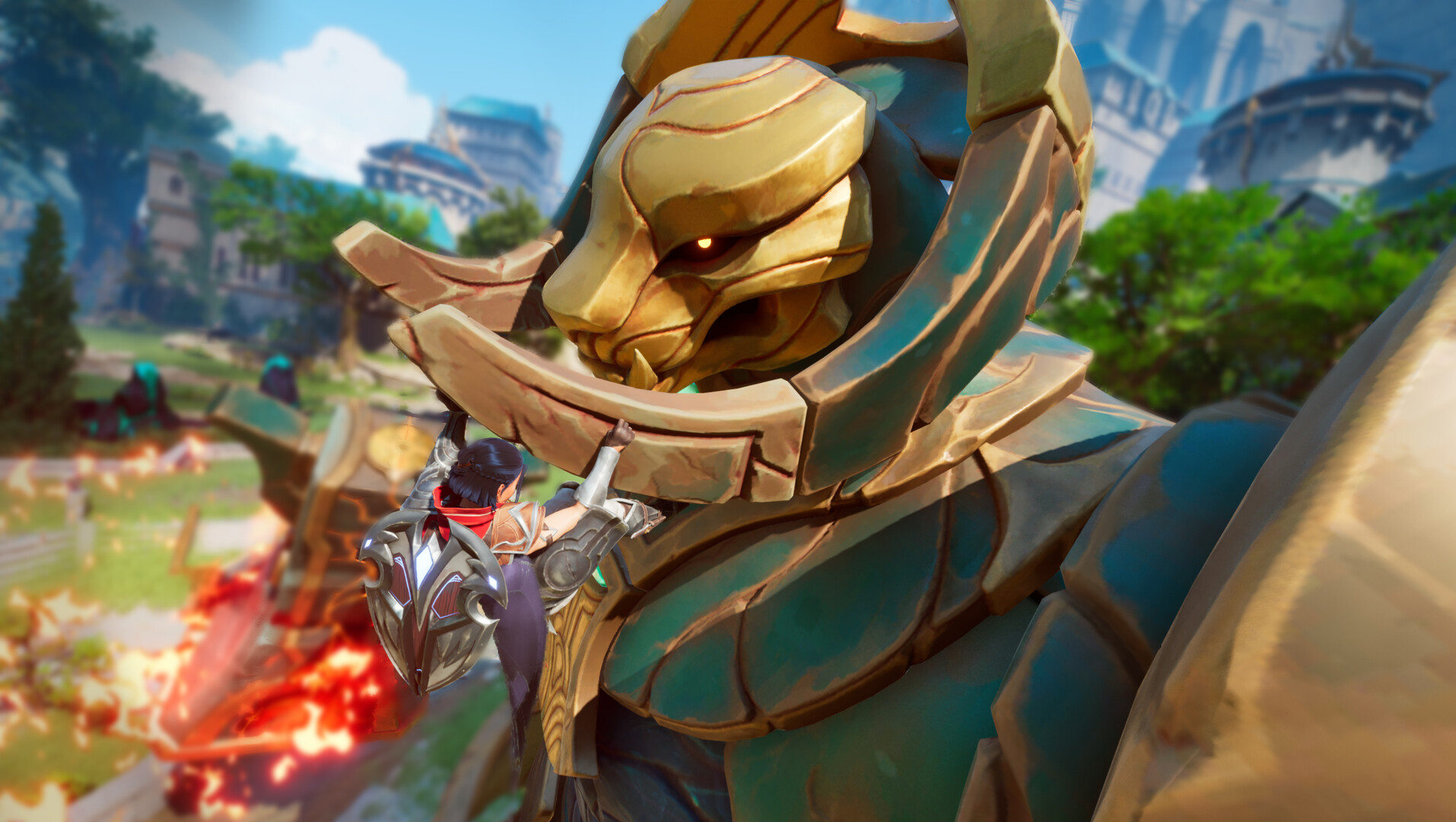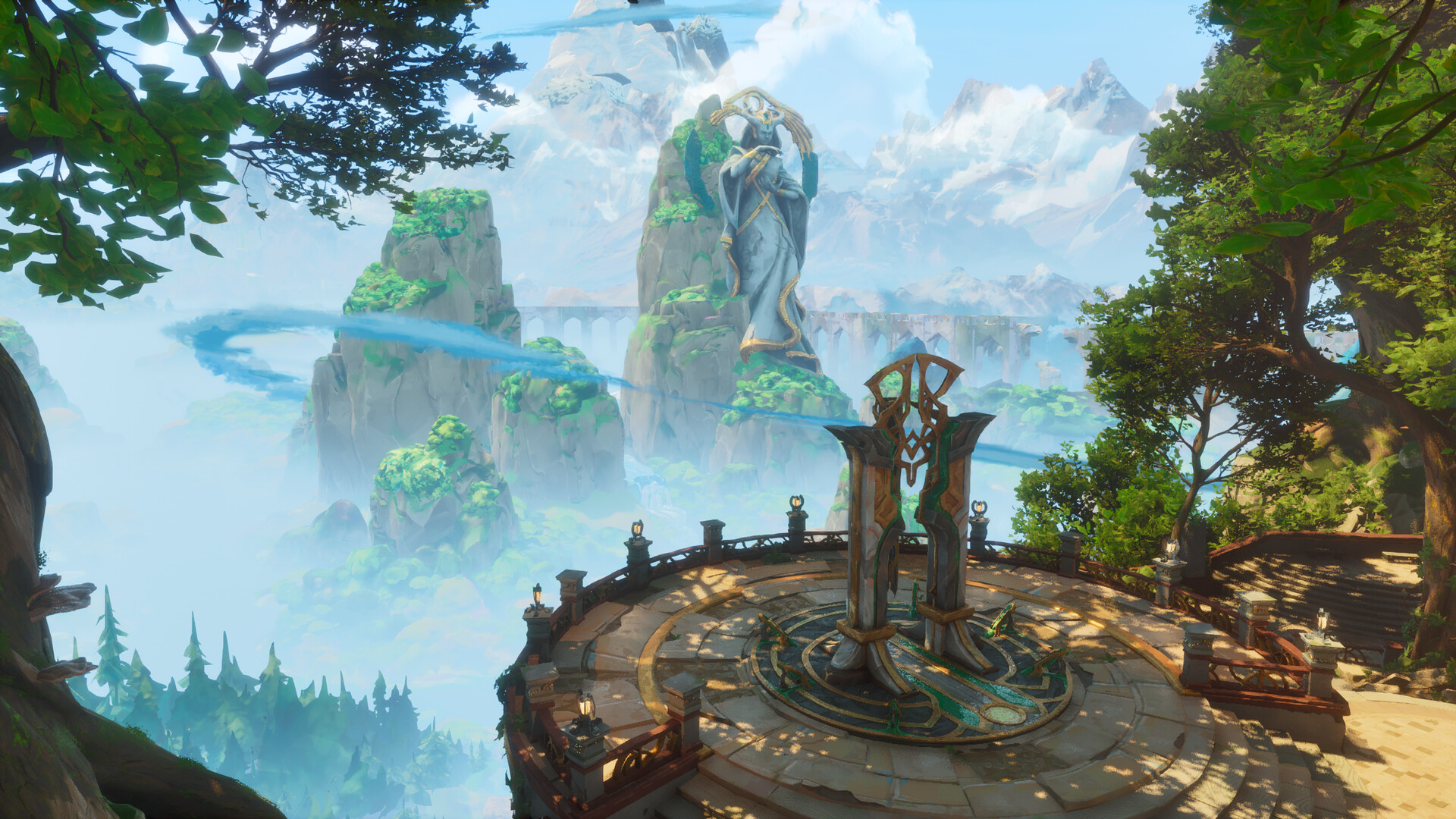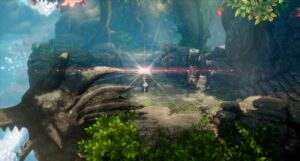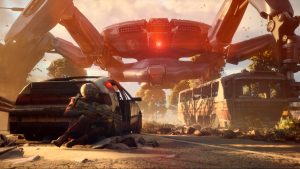
Comprised of industry veterans that have worked on everything from Dragon Age and Mass Effect to Assassin’s Creed and more, Yellow Brick Games has no shortage of talent and experience in its ranks, so it’s no surprise that the independent team’s debut title, Eternal Strands, has attracted the amount of attention that it has. From its vibrant art style and its systems-driven combat to its promise of a rich fantasy setting and more, there’s plenty about the action-adventure title that has caught the eye. Recently, we had the chance to shoot across some of our most burning questions about the game to its developers at Yellow Brick Games, learning more about its setting, combat, and more. You can read our full interview with Eternal Strands’ developers below.
"Having a small team is actually one of the reasons why Eternal Strands is using systemic gameplay. Although it was our goal from the start, building systems that allow for this sort of reactivity allows us as developers to integrate them more easily in the end."
One big way in which Eternal Strands is different from some of the studio alum’s previous games is that it has a pre-defined character compared to a custom player one. What was the big reason for that shift? Was it narrative-driven?
Mike Laidlaw (Chief Creative Officer): Before we started Eternal Strands, we established that a primary goal of our studio, Yellow Brick Games, was to build a project that responsibly matched the talents of the team and the scope that felt right for our capacity.
Working with a single character both fit that criteria, insofar as it let us focus our scope for our first game, and allowed us to build a story that introduced our world from a specific point of view. Brynn’s been training to be a “Point,” the field person that takes the risks in every weaver band, for most of her adult life. Eternal Strands finally presents her with her time to shine, even though she’s new in the role.
This balance: one of being a novice, but still prepared and familiar with the role, lets us move the story directly to the action, which we feel really suits the game’s tone of high adventure. In a lot of ways, her character is inspired by the early appearances of Lara Croft (who was already experienced in her first games), or the competence of military veteran Rick O’Connell, brought to life by Brendan Fraser from the Mummy movies.
You have mentioned Shadow of the Colossus as one of your inspirations. Do you mean that in the way the game will tell its story, the atmosphere it strikes, the world design, or something else entirely?
Laidlaw: Shadow of the Colossus inspired the scale of our foes. It was one of the first games where the foes felt truly outsized: a massive creature that filled the screen, and that you had to approach intelligently. Like Colossus, there’s no way to bring these foes down by just hitting them in the ankle over and over. Where we differ from Colossus, though, is that where its foes had specific weak points that had to be struck to defeat them…almost like a “puzzle” approach to their defeat, we let you find your own solutions by casting and combining magic and weapons.
Where Shadow of the Colossus and Dragon’s Dogma are in more gritty, dark fantasy worlds though, Eternal Strands draws a lot more on vibrant and bright color palettes. In terms of tone, are closer to something like The Mummy than Game of Thrones in everything from the visuals to the story.
Eternal Strands looks to be very systems-driven. Given that you are working with a relatively smaller team compared to most modern AAA productions, how challenging has it been to make a game that has to be so reactive to the player and what they do?
Louis Tremblay (Chief Technology Officer): Having a small team is actually one of the reasons why Eternal Strands is using systemic gameplay. Although it was our goal from the start, building systems that allow for this sort of reactivity allows us as developers to integrate them more easily in the end.
Creating systems-driven gameplay initially takes more time in the development process, because you must take time to conceptualize, design, and build gameplay architectures that can have such systemic interactions. Once the work is done though, you do not need to spend time crafting exceptions to your rules, one after the other. After a certain threshold of boundaries, these systems-driven mechanics become a time saver. You will spend a lot more time initially, so it is not always the best approach to building a game depending on your team size – but it was worth it in our case.
"Eternal Strands is first and foremost an action-adventure game, and fans of that style of game will find themselves right at home. The story’s there to provide context, goals, quests and so on that push our players to enjoy and experiment while in combat and exploring the world."
How much of an emphasis can players expect on the narrative and storytelling in Eternal Strands?
Laidlaw: Strands is first and foremost an action-adventure game, and fans of that style of game will find themselves right at home. The story’s there to provide context, goals, quests and so on that push our players to enjoy and experiment while in combat and exploring the world. With this focus in mind, we decided very early in development that Eternal Strands was not going to be a game about tough moral choices or dilemmas, but instead a tale of discovery. A group of competent experts unravelling the mysteries of what happened to the Enclave.
This decision opened up some interesting opportunities to our storytelling. While the various members of Brynn’s weaver band help her solve those mysteries through quests, they also react extensively to her progress. The game contains dozens of completely optional dialogs – and every dialog in Eternal Strands is fully voiced – that react to Brynn’s progress through the story, her discoveries, and so on. These aren’t needed to complete the game, but we feel they add both texture and depth for players who want to dig deeper into the story.
We are very interested in the process that went behind the game’s art style. Can you talk us through how you arrived at this aesthetic for Eternal Strands?
Sébastien Primeau (Art Director): After many years working on realistic-looking games, we knew we didn’t want to go with the full physically-based rending (PBR) with 3D scans, photogrammetry, and hyper-realistic lighting. We wanted something different, and personally, I was eager to step out of my comfort zone. Games like Team Fortress and Dishonored left a lasting impression on me with their distinct visual styles, and I always hoped I’d get the chance to work on a project like that.
When I first met with Mike before joining Yellow Brick Games, he mentioned the art direction would be stylized. On my drive home, I kept thinking about that word—”stylized.” It’s simple but leaves so much room for interpretation. Honestly, creating a stylized game is challenging, and we had to start somewhere. For inspiration, I found myself turning more to short films, anime, and movies rather than games.
Our goal was to create something that, when you take a screenshot, looks more like an illustration than a typical game. During the pandemic, with everyone feeling anxious and uncertain, we also wanted to bring some light and hope into the game’s art. That’s why Eternal Strands has such a bright, vibrant color palette—it’s meant to feel welcoming and uplifting.
Being a small team, we had to iterate fast. Our process often started with quick thumbnails and sketches to brainstorm ideas. Limited time and resources meant we had to focus on the big picture first and refine the details later. For example, achieving the painterly texture look took multiple iterations. We focused on minimizing unnecessary details and stylizing elements like roughness and normal maps to avoid a realistic look. Impressionist painters and graphic novels were big influences during this process.
I hope we’ve created something unique with Eternal Strands, and I’m excited for people to experience it.
"Our goal was to create something that, when you take a screenshot, looks more like an illustration than a typical game. During the pandemic, with everyone feeling anxious and uncertain, we also wanted to bring some light and hope into the game’s art. That’s why Eternal Strands has such a bright, vibrant color palette—it’s meant to feel welcoming and uplifting."
How is the process of developing a game like this different from working with a smaller, independent team than it was for the AAA titles your team’s veterans have worked on previously? How does that past experience inform how you have worked on Eternal Strands?
Laidlaw: AAA development, especially over several releases as many of our team have tackled, prepares you for a lot of eventualities. If you want to be on a console platform, for instance, you’ll need to pass through their certification process, and veteran developers can anticipate the needs of that process and the timeline. It works the same for just about everything: experience makes you better at estimating how long a task will take, and knowing what tools will best help you achieve your goals.
Where things differ, to our considerable delight, is that a smaller team has fewer communication problems: we all know who’s responsible for which features, which levels, which creature and so on, and it’s easy to communicate progress or get answers to questions as a result. Similarly, there’s this sense that the team knows the game we’re making and, ideally, why we’re making the decisions we have. It’s easier to bring a smaller group into consensus and ensure everyone has time to get their questions answered, and that’s been one of the delights of working on Eternal Strands.
Roughly how long will an average playthrough of the game be?
The average playthrough time is around 25 hours. This game offers a lot of exploration opportunities and side quests, so depending on your playstyle, this can vary a lot.
Any chance this game could hypothetically hit the Switch successor in the future?
We’ve announced the launch of Eternal Strands for Q1 2025 on Xbox Series X|S, PlayStation 5, and PC (Steam & Epic Game Store). We’re always aiming to reach as many players as possible though, so you never know in the future!

















